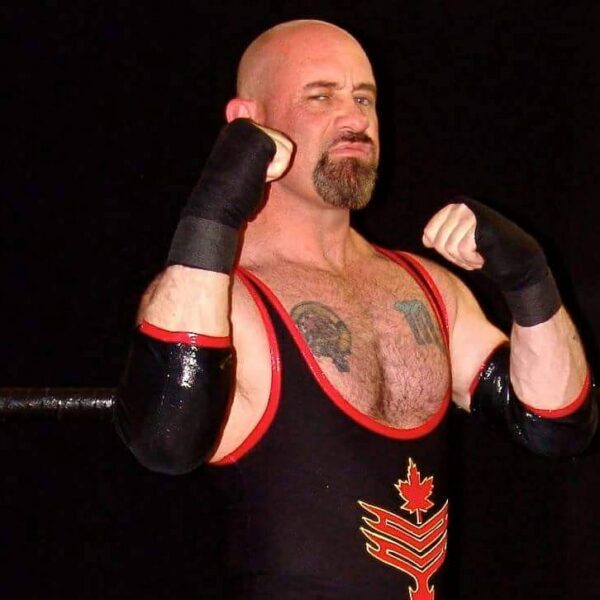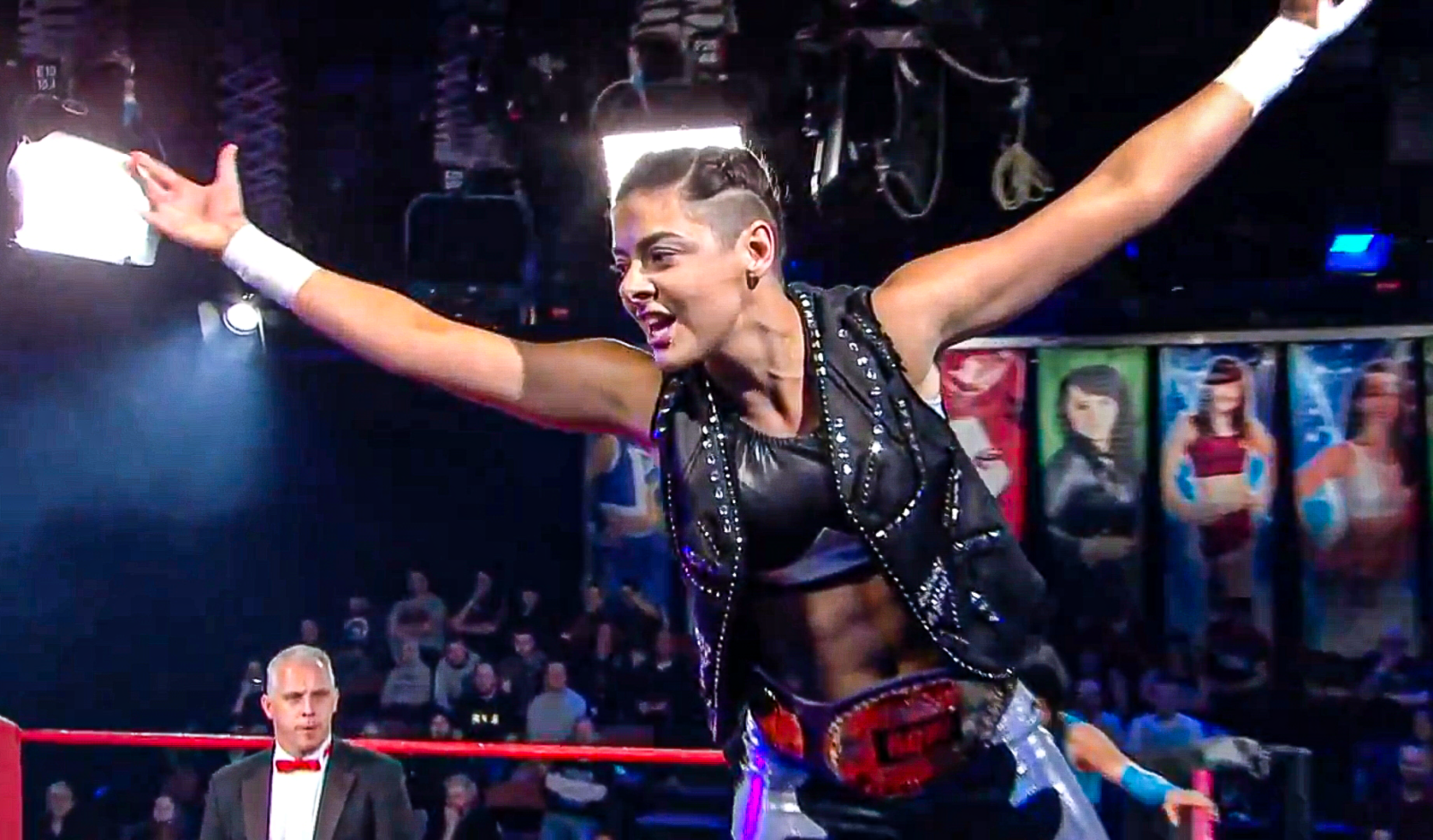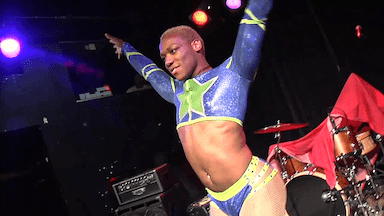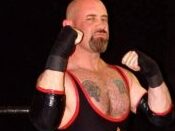
 The combination of fantastic stage outfits and personas, hot bodies, lots of same-sex body contact, and few limits as to what behavior is acceptable on stage, means it’s no surprise that professional wrestling has long attracted queer people. Ryan Levey’s excellent new documentary, Out In The Ring, charts the history of queer pro-wrestling in the USA. Combining amazing archive footage and interviews with both current and former queer wrestlers, he tells this fascinating story beginning in the 1940’s up to the present day. The outrageous outfits from past queer wrestlers alone make this documentary worth watching.
The combination of fantastic stage outfits and personas, hot bodies, lots of same-sex body contact, and few limits as to what behavior is acceptable on stage, means it’s no surprise that professional wrestling has long attracted queer people. Ryan Levey’s excellent new documentary, Out In The Ring, charts the history of queer pro-wrestling in the USA. Combining amazing archive footage and interviews with both current and former queer wrestlers, he tells this fascinating story beginning in the 1940’s up to the present day. The outrageous outfits from past queer wrestlers alone make this documentary worth watching.
Wrestling is showbiz. Wrestlers are actors, entertainers, and performers and they need to grab your attention. So, it’s natural that over time, wrestling performances become more and more outre. Despite homosexuality still being illegal in the 1940s and 50s, queer wrestlers began to make their presence felt in the ring in these decades. Early pioneers in queer wrestling included Mexico’s camp, drag-themed ‘Exoticos’ who started in the 1940s. Then people like Gorgeous George and US heavyweight wrestling champion Pat Patterson rose through the ranks in the ring in the 1950s and 60s. Their sexuality was an open secret but it was still very much a case of “Don’t ask, don’t tell”, even though Patterson lived with his long-term boyfriend, Louis, for over 40 years. The 1960s saw the beginning of out queer wrestlers starting to become successful, including wild gay Chris Colt, whose Hells Angel and Tom of Finland inspired looks and rock n roll behavior with his boyfriend, both in and out of the ring, made him notorious. We also hear the stories of other well-known wrestlers from the past including the flamboyant Austin Idol, Rick Flare, Adrian Adonis Sandy Parker and Susan ‘Tex’ Green.
 Homophobia was, and still is to some extent, rife in the industry and queer wrestlers often suffered abuse on stage from the baying crowds and were treated badly by promoters. When Chris Kanyon came out as gay he was made by his promoter to dress up as Boy George and come out of a wooden closet placed in a wrestling ring, before being battered by a much stronger opponent, much to the delight of the audience. Early out lesbian wrestlers were often promoted as straight male fantasy objects. Such industry and audience homophobia meant that queer wrestlers often felt very isolated and unsupported and premature death rates amongst high profile queer wrestlers were higher than average – often due to suicide or substance abuse.
Homophobia was, and still is to some extent, rife in the industry and queer wrestlers often suffered abuse on stage from the baying crowds and were treated badly by promoters. When Chris Kanyon came out as gay he was made by his promoter to dress up as Boy George and come out of a wooden closet placed in a wrestling ring, before being battered by a much stronger opponent, much to the delight of the audience. Early out lesbian wrestlers were often promoted as straight male fantasy objects. Such industry and audience homophobia meant that queer wrestlers often felt very isolated and unsupported and premature death rates amongst high profile queer wrestlers were higher than average – often due to suicide or substance abuse.
Today however queer wrestling is on a roll. The wrestling community is so big, and in constant need for new audiences, that queer wrestlers and promoters are welcome like never before. Wrestlers such as Mike Parrow have paved the way for more open-mindedness within the industry and there are now dozens of high-profile queer wrestlers of every creed, color, gender and sexuality, including a new generation of trans wrestlers. Interviews with this new generation of queer wrestlers are uplifting and heart-warming.
Levey’s documentary is ultimately a very positive piece of work and hopefully will introduce more people to the fascinating world of queer wrestling. Make sure you catch it when you can.
World Premiere- OUT IN THE RING at Toronto Inside Out 2SLGBTQ Film Festival 2022 : then for future screenings https://www.facebook.com/OutInTheR
Review: Ris Fatah
Queerguru’s Contributing Editor Ris Fatah is a successful fashion/luxury business consultant (when he can be bothered) who divides and wastes his time between London and Ibiza. He is a lover of all things queer, feminist, and human rights in general. @ris.fatah

